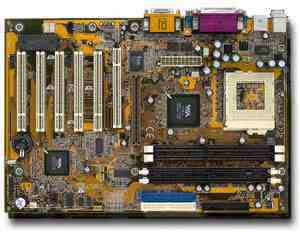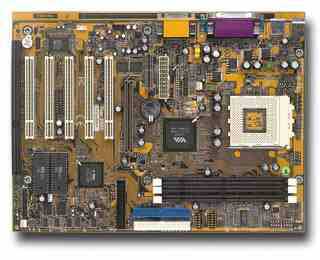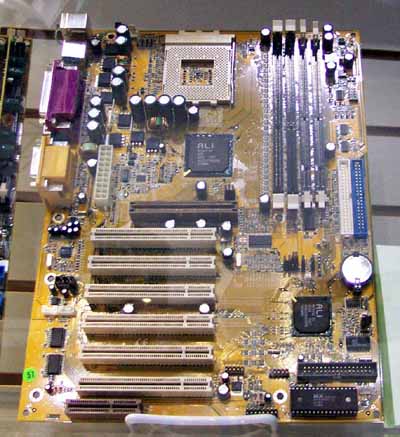Motherboards in 2001 Preview: Part 1
by Henry Kuo on November 27, 2000 1:42 AM EST- Posted in
- Motherboards
Three Letters for Chaintech: DDR
Chaintech has also focused on the different kinds of DDR solutions. However, only the DDR solution for Socket-370 processors was shown, whereas their DDR solution for AMD processors are not ready yet. They are still deciding which chipset(s) they will use for DDR, and also which model(s) will be shipped to the US. As far as the Intel i850 chipset goes, Chaintech told us that a board using the chipset is coming, but they could not provide us with any further details.

Above, you can see the 6JVD2, Chaintech’s DDR solution for Socket-370 processors. It uses the VIA Apollo Pro266 chipset, including the 8633 North Bridge and the VIA 8233 Super South Bridge combination. The North/South Bridge nomenclature may actually be a bit of a misnomer here now that VIA is using V-Link to connect their upcoming chipsets. V-Link is much like Intel’s Hub Architecture, providing a dedicated link, rather than just the PCI bus, between the two key chipset components.
The 6JVD2 has two DDR DIMM slots and two “normal” SDR DIMM slots, so users can choose to stay with their current PC133 SDRAM if they want to. There is another variation of the board, the 6JVD, which has three DDR slots and no SDR slots.
Notice the “inverted” PCI slot next to the AGP slot. That is called an ACR slot and is VIA’s answer to the Intel CNR slot. It's supposed to provide the same functionality, with room to expand since many of the pins remain unused. By using a backwards PCI slot, there is no additional cost for producing a new connector. Unfortunately, it probably means that you cannot have a shared ACR/PCI slot like you can with CNR/PCI without the use of special “thin” PCI connectors, like we saw on the ASUS CUSL2.
Above is the Chaintech 7RJD2 using the ALi 1647 North Bridge, the core of the MAGiK 1 chipset. It supports 200/266 MHz FSB AMD processors as well as DDR SDRAM. It has two DDR slots and two “normal” SDR slots, so you can choose to stay with your current PC133 SDRAM. Another variation of the board, the 7RJD, has three DDR slots and no SDR slots. The South Bridge here is the ALi 153D+.
Chaintech has two other motherboards providing DDR support for AMD processors - the 7VJD/2 and the 7KJD. The 7VJD/2 uses the VIA KT266 chipset, supporting 200/266 MHz FSB AMD processors. The 7VJD has three DDR DIMM slots, where the 7VJD2 has two DDR slots and two SDRslots. The 7KJD uses the AMD 761 / VIA 8231 combination, and has two DDR slots.

This is the 7AJV2, which is similar to the 7AJA2 (KT133 chipset), but uses the KM133 chipset instead. The KM133 chipset is a drop in (ie pin compatible) replacement for the KT133 that adds integrated S3 Savage 4 video.











0 Comments
View All Comments